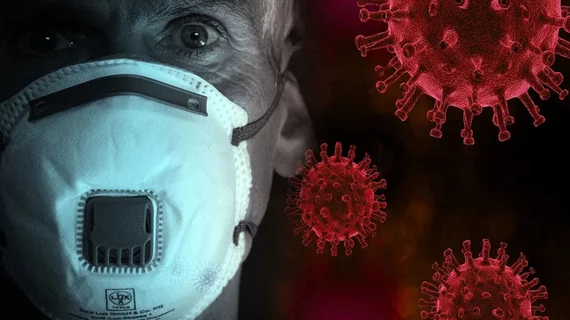COVID-19 brain damage can be categorized using a new 3-stage 'NeuroCovid' framework
Evidence of COVID-19’s dangerous impact on the central nervous system continues to mount, and one neurological expert is proposing a new system that classifies such brain damage into three distinct stages.
Harvard- and Johns Hopkins-trained neurologist Majid Fotuhi, MD, PhD, reviewed a number of case studies for his three-stage framework, which he describes June 10 in the Journal of Alzheimer’s Disease. The “NeuroCovid” classification scheme—as it’s known—provides a solid foundation for future work and investigations into COVID’s long-term effects on the nervous system.
“We are learning that a significant number of hospitalized COVID-19 patients have various degrees of brain impairment,” Fotuhi, who is also the medical director of NeuroGrow Brain Fitness Center in Virginia, added in a statement. “There is a lot we can do to promote brain healing in COVID-19 patients, but first we must understand the nature and severity of their neurological deficits.”
For one, he said that retrieving a baseline MRI prior to discharging patients from the hospital is “imperative” to establish a starting point for evaluating and treating individuals.
More than two dozen case reports cited in the analysis detail neurological symptoms in patients infected with the novel virus, including stroke, seizures, confusion, dizziness, paralysis, and coma.
One study of more than 700 patients, published early last month in Radiology, found that 59% of patients experienced an altered mental state, 31% suffered a stroke, and a separate 15% had serious neurological symptoms requiring brain or spine imaging.
Below are the three “NeuroCovid” classification stages proposed by Fotuhi and colleagues.
- NeuroCovid Stage I: Virus damage is contained to epithelial cells in the nose and mouth, and primary symptoms include loss of smell and taste.
- NeuroCovid Stage II: Inflammation begins to flood the body, beginning in the lungs and moving through the blood vessels toward all the patient’s organs. This “cytokine storm” causes blood clots which can result in small or large strokes.
- NeuroCovid Stage III: The cytokine storm damages the blood-brain barrier, allowing virus particles to infiltrate the brain leading to seizures confusion, coma, or encephalopathy.
“Our experience with previous forms of coronaviruses suggests that in the long-term patients may develop depression, insomnia, Parkinson’s disease, memory loss, or accelerated aging in the brain,” Fotuhi added. “For those recovering from COVID-19, I recommend regular exercise, eating a heart healthy diet, reducing stress, and improving sleep; these are critical ways patients can rejuvenate their brain and minimize having poor outcomes in the future.”

